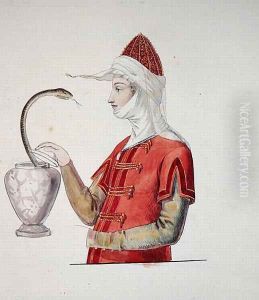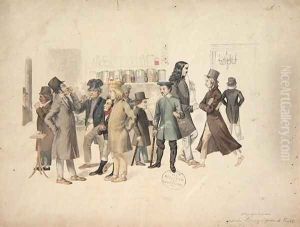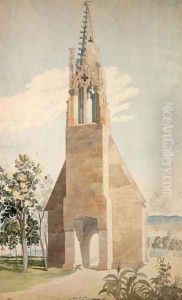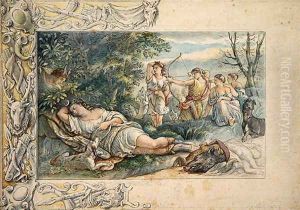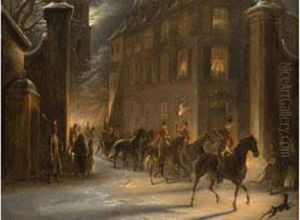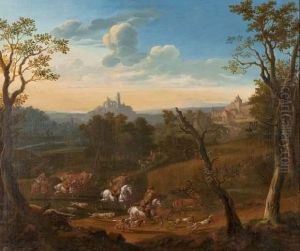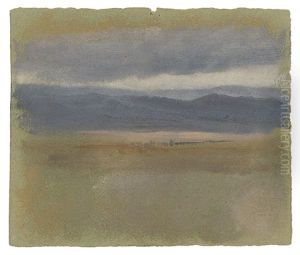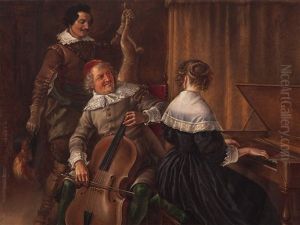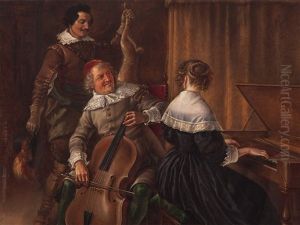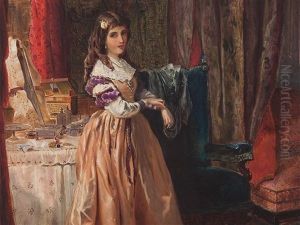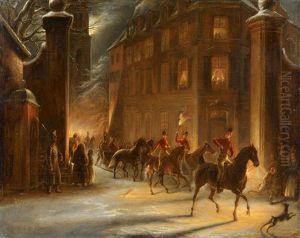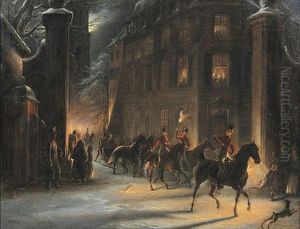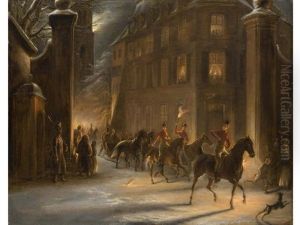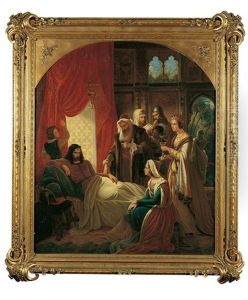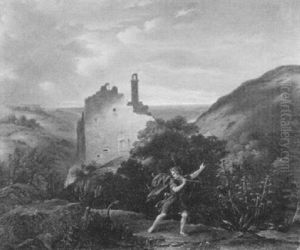Ludwig Sigismund Ruhl Paintings
Ludwig Sigismund Ruhl, although not as widely recognized as some of his contemporaries, was a German artist and sculptor active during the late 18th and early 19th centuries. Born in 1781 in Kassel, Germany, Ruhl was a part of the artistic milieu that was influenced by the broader European movements of Neoclassicism and Romanticism.
Ruhl's artistic journey began under the tutelage of his father, Johann Christian Ruhl, who was also a sculptor. This early exposure to the world of art and sculpture deeply influenced Ludwig's career choice and style. Following his initial training with his father, Ruhl went on to further his expertise in the arts by studying at the Academy of Fine Arts in Berlin. His education and training there would have been rigorous, focusing on the classical principles of beauty, proportion, and the emulation of the art of antiquity.
Throughout his career, Ruhl was known to have created various sculptures, reliefs, and other artworks that often reflected the Neoclassical style's preference for simplicity, symmetry, and subjects drawn from history and mythology. His works would have been characterized by smooth lines, attention to detail, and a sense of idealized realism that was popular during the time. Ruhl was also influenced by the Romantic movement, which might be observed in his works through the expression of emotion and the exploration of nature.
In addition to his sculptural works, Ruhl served as a professor at the Academy of Arts in Kassel, where he would have passed on his knowledge to a new generation of artists. His role as an educator suggests that he was held in high regard in the artistic community of his time.
Ruhl's death in 1847 marked the end of a career that spanned a significant period of artistic evolution in Europe. While he may not have achieved the same level of fame as some of his peers, his contributions to the arts during his lifetime would have been valued by those who knew his work or who were influenced by his teachings. His legacy, like that of many artists of the era, would be appreciated by art historians and enthusiasts who study the period and its contributions to the development of European art.
